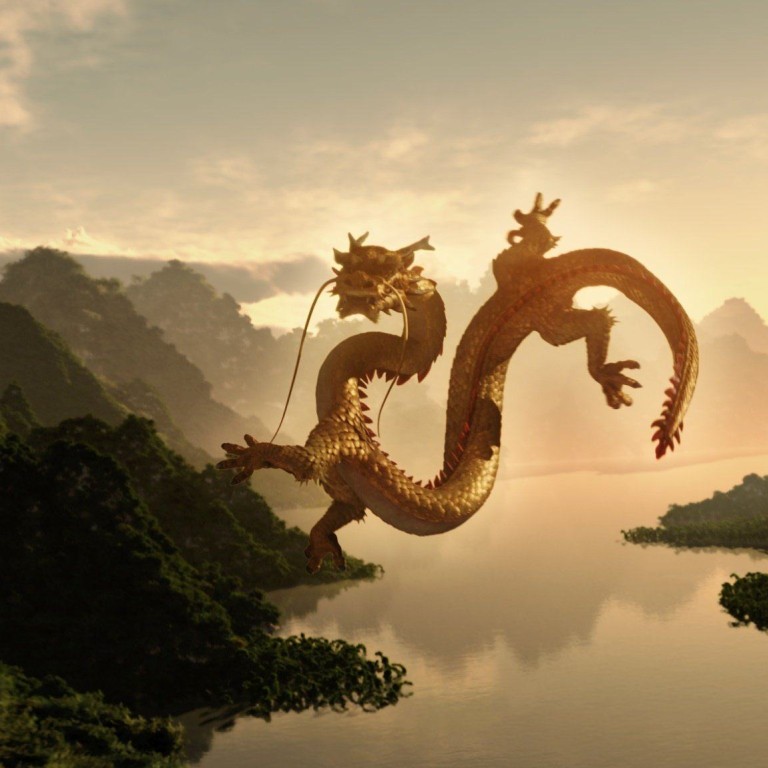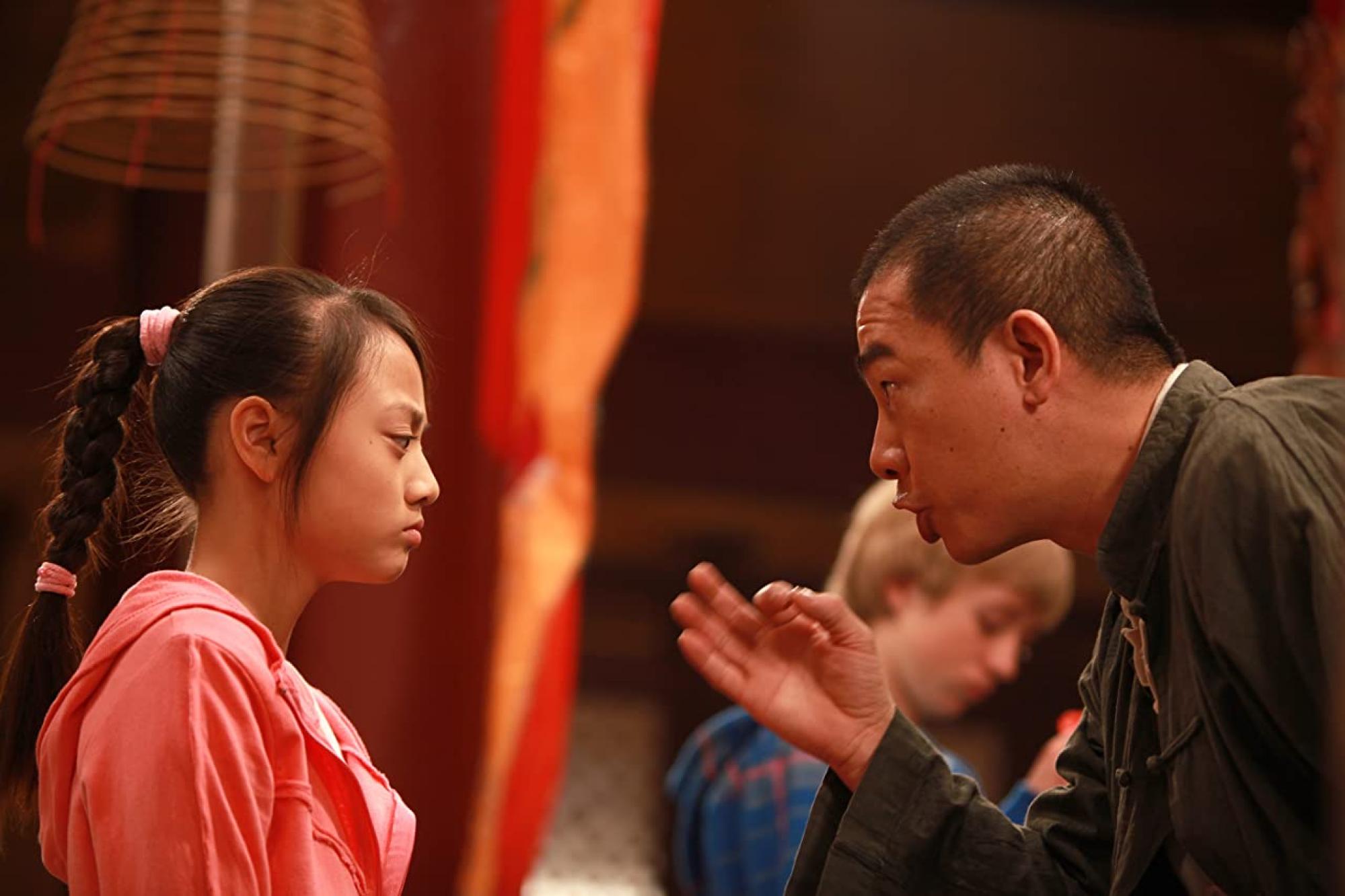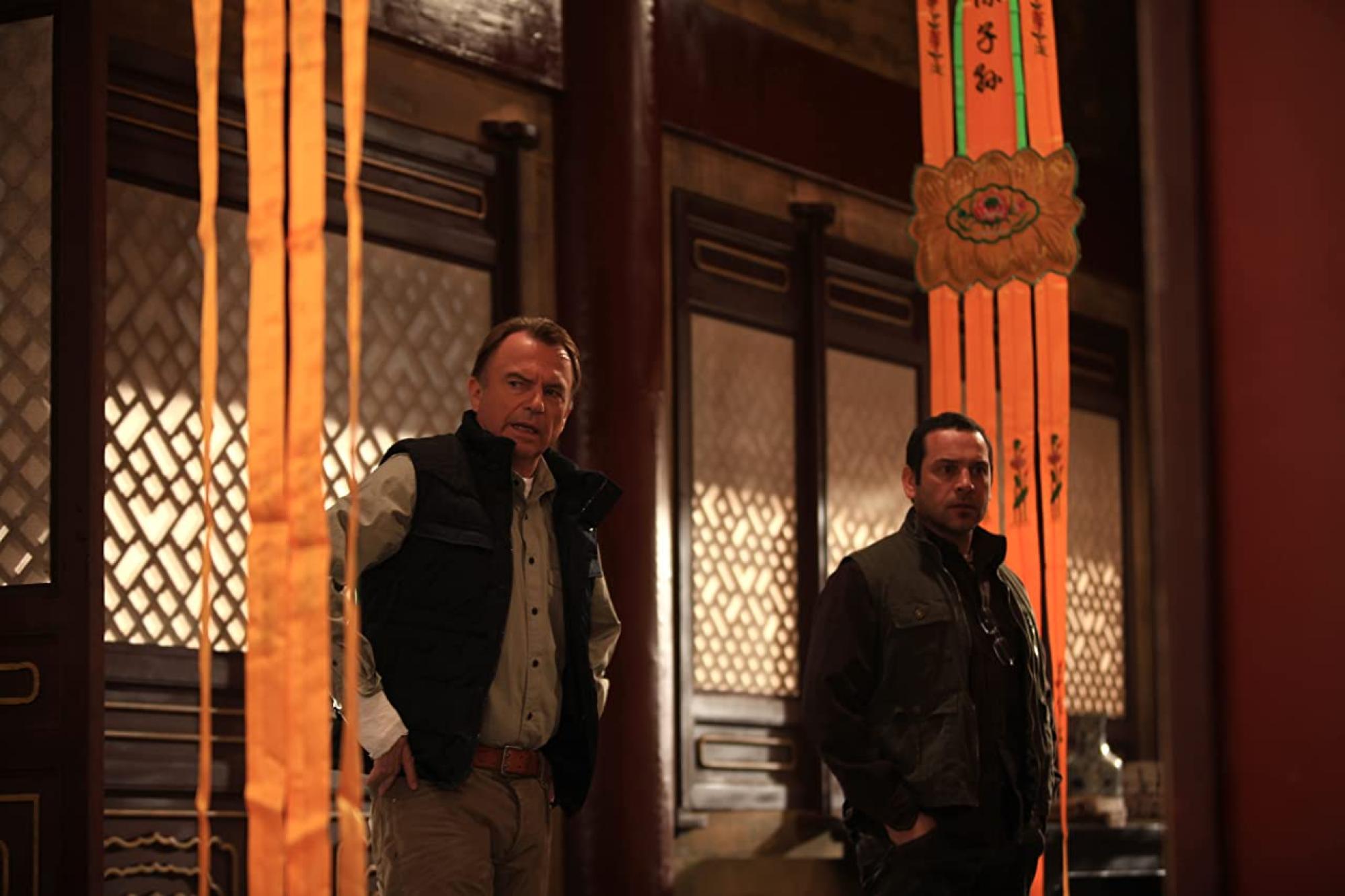
Why this dragon didn’t roar: starring Sam Neill, first Chinese-Australian film co-production The Dragon Pearl was a flop
- To appease China and get approval for The Dragon Pearl, its name and the character of the dragon were changed and the script rewritten at the last minute
- Despite its international cast, most of the central performances were terrible, and the film was spoiled by a ‘laughable’ CGI dragon and hastily reworked script
Traditionally, unless it comes stamped with the names George Miller, Baz Luhrmann or Mick “Crocodile” Dundee, Australian cinema has had trouble breaking through internationally.
Partly this is to do with geographical isolation, partly it’s because, like most English-speaking places, it’s completely in thrall to Hollywood.
But there’s also an inbuilt inferiority complex. As local-boy-done-good Simon Baker (The Mentalist) told The New York Times: “Australians have a little bit of a cultural cringe with hearing their own accent on the screen.”
Looking to break the deadlock, in 2007 Screen Australia signed a co-production deal with China, then the world’s third largest film market. The first release under the new agreement was the 2011 children’s fantasy The Dragon Pearl, and it more than lived up to its internationalist billing.
Directed by Australian Mario Andreacchio and shot in China’s Hengdian World Studios, the film features a cast of Antipodean, mainland Chinese and Hong Kong actors, plus visual effects from Australia’s Rising Sun Pictures.
It follows teenager Josh Chase (Louis Corbett), who’s sent to China to join his father, the renowned archaeologist Chris Chase (Sam Neill), at a dig. At the airport, Josh meets Ling (Li Linjin), the daughter of his father’s colleague Dr Li (Wang Ji), and together they stumble across an ancient dragon buried beneath a temple, before vowing to find its missing pearl.
Dwayne Johnson’s Skyscraper a co-production that shows respect to China
Australian magazine RealTime billed it as “A Spielbergian adventure that literalises Australian-Chinese cooperation through the figures of two kids who use their complementary talents to restore a lost treasure to a dragon”. The results, however, were not quite so harmonious.
In order to appease the Chinese, Andreacchio had to change the working title, The Last Dragon, as well as how he envisioned the creature. In Western culture, dragons are fearsome, fire-breathing monsters, rather than noble symbols of power and prosperity, and the idea that the film might be introducing the final dragon caused some consternation in official channels.
“We had to rewrite the screenplay – we were six weeks out from shooting, and I had to go back to the treatment stage, which is pretty scary,” Andreacchio told The LA Times. “The only way we could continue was to unstitch the story and stitch it up again with changes so we could get filming approval.”

In truth, you can still spot some of that stitching. The central performances are terrible, particularly Hong Kong’s Jordan Chan Siu-chun as mysterious guardian Wu Dong, whose character is given to outbursts such as, “Oh my Buddha!” and seems beamed in from a different film, if not galaxy.
The dialogue is no better, such as when Chase says, “You know, Josh, this does sound kind of crazy.” Josh replies, “You know what’s crazy? You and mum getting a divorce!”
While these elements aren’t necessarily a barrier to success in children’s fantasy, the whole enterprise is so shoddily put together it’s very difficult to suspend disbelief.

Perhaps the worst offender is the CGI dragon, which The Hollywood Reporter called “a soulless, undulating thing that looks dubious in its subterranean lair and downright laughable when it emerges into the sunlight”.
Despite sullying China’s national icon, the film opened on 3,500 screens across the country, making 16.2 million yuan (US$2.3 million) on its first weekend. “It’s a remarkable achievement, not only because of the initial dollar value, but that we were able to make a film that crosses cultures and resonates,” said Andreacchio.
By contrast, it barely registered in Australia, which couldn’t have been part of the plan, although the future of Sino-Australian films looks to be in surprisingly decent health.

In 2017, to celebrate the 10-year anniversary of the deal, a slate of 14 new co-productions was announced, backed by A$400 million (US$269 million) in investment. Crucially, most seem to be Chinese-language films, suggesting that, when it comes to that inferiority complex, there’s still some distance to go.

